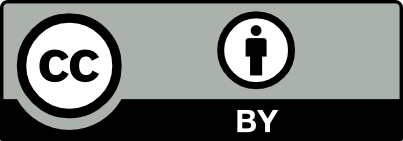Showing 4 results for Clozapine
A Massoodzadeeh, S.h Hosseini, M Razegheian,
Volume 15, Issue 50 (1-2006)
Abstract
Background and purpose: In spite of discovering new antipsychotics in the past years, many patients of schizophrenia don’t response to none of them and are resistance to treatment. In this case, clozapine, ECT or some combination of drug mostly be used, but there are many patients of schizophrenia who are resistance to them. In recent years, of combination of ECT and clozapine has been suggested for these patients with promising results in primary studies. The purpose of this study was to evaluate the effects of a combination of ECT clozapine in treatment of resistance schizophrenia in comparison with clozapine and ECT administered reparately and double blind.
Materials and methods : Eighteen resistance schizophrenia patients were selected and divided into three groups. The first group took clozapine, the second group took ECT, and third group took a combination of ECT and clozapine. The responses to treatment evaluated with PANSS and analysed with ANOVA and t-test.
Results : The rate of decrease of PANSS scale in three groups of clozapine, ECT and combination both of them were 46%, 40%, 71% respectively, with significant difference (p<0.05). Combination of ECT and clozapine showed faster response than ECT and clozapine alone.
Conclusion : Combination of ECT and clozapine was effective and safe in treatment of resistance schizophrenia.
E Salehifar, S.h Hosseini,
Volume 17, Issue 58 (5-2007)
Abstract
Background and purpose: Oculogyric crisis which is a dystonic reaction commonly caused by typical antipsychotics treatment of acute dystonias, rarely occurs with atypical antipsychotics like clozapine. The aim of this report was to describe a rare case of clozapine-induced oculogyric crisis successfully treated with biperiden.
Case: The patient was a 42-year-old woman with a 19-year history of schizophrenia treated with high-potency typical antipsychotics, risperidone and lithium augmentation with appropriate doses and duration. Because of poor response to prior medications, she was prescribed clozapine started with 25 mg/d and gradually titrated up to 150 mg/d. She has experienced two episodes of oculogyric crisis treated successfully with biperiden.
Discussion: Although low affinity of clozapine for blocking D2 dopaminergic receptors and its anticholinergic activity may explain the significantly lower incidence of dystonic reactions, they may happen in some patients and could be suppressed with biperiden.
Conclusion: Clinicians should consider dystonic reaction as a possible clozapine adverse effect and on the basis of this report, clozapine-induced oculogyric crisis may be treated successfully with biperiden.
S.h Hosseini, S Moudi ,
Volume 18, Issue 66 (10-2008)
Abstract
Priapism is a rare but serious side effect of psychotropic drugs with incidence of 15-26%. Approximately all of of the atypical antipsychotic drugs are reported with this complication.in this report a 24-years old man with multiple delusions which was treated with risperidone(6mg),was affected by priapism after two months . After drug dose reduction and finally discontinuation, olanzapine(5mg) was started. Only one dose of this drug cause recurrence of priapism. Therefore this drug was discontinued also. After clozapine starting(150mg),priapism was induced . Therefore it is necessary for physicians whom prescribe serotonin-dopamin antagonist drugs must consider this rare but serious side effect.
Sanaz Salehpour, Abbas Masoodzadeh, Ali Reza Khalilian, Javad Setareh,
Volume 23, Issue 105 (10-2013)
Abstract
Background and purpose: EEG is used as a diagnostic tool in the diagnosis and prognosis of
disease spread. Among the psychiatric illnesses that can utilize EEG to measure response to treatment,
schizophrenia can be noted. Many investigations on the application of data EEG as a predictor of
treatment response in patients with schizophrenia refractory to clozapine has been done in order to resolve
contradictions and the limitations of previous studies. We studied the response to treatment with
clozapine, with the PANSS greater number of samples making them prior studies have examined.
Material & methods: In a cross-sectional study, 70 patients with schizophrenia resistant to
treatment with candidates receiving clozapine were selected from those EEG and PANSS baseline was
patient during twelve weeks of treatment with clozapine were again patients PANSS was used and EEG
raw patients with a good response to treatment and disease with poor response to treatment were
compared with each other. After data collection, descriptive statistics software SPSS17 square test was
used for the analysis of EEG data from a linear regression to examine the relationship between the
indicators of response to clozapine treatment.
Results: The results showed that there is coherence of EEG and the treatment response to
clozapine significant correlation was (P= 0.00). The results showed that there is presence of asymmetry in
EEG and the treatment response to clozapine significant correlation was (P= 0.8).
Conclusion: The EEG abnormalities include coherence of EEG in predicting response to
treatment in patients with treatment-resistant schizophrenia to clozapine which is effective.



